-
7 Port USB 2.0 Slim Powered Hub w/ Power Adapter
-
×
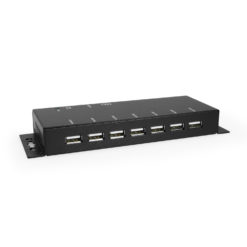
- StockStatus:
In stock
1 × $65.95
6 Port USB 3.2 Gen 1 Over IP Network Device Sharing Hub w/ Port Status LEDs
Industrial Grade | +9~30V DC Input | DIN Rail | 5 Gbps | LED Indicators
- Network Device Sharing: USB devices connected to the 6-Port USB 3.2 Gen 1 Over IP Network Hub can be made available to remote clients over LAN. The USB 3.2 Gen 1 Over IP Network 6-Port Hub shares USB devices over the TCP/IP network.
- Super Fast Speeds: This USB hub is 3.2 Gen 1 compliant, ensuring super-fast 5Gbps data transfer speeds. It supports super speed, high speed and full speed which enables it to be compatible with USB 2.0 / 1.1.
- Superior Build Quality: Housed in a rugged steel chassis, the 6-port hub is perfect for installations in offices, labs, warehouses, heavy machinery, automation equipment, and other industrial applications.
- Upstream: 1 USB port, Type B connector
- Downstream: 6 USB ports, Type A connectors
- Power Connector: 2-Pin Terminal Block
- Supply Current: 900mA USB Bus Power for Each Down-stream Port
$137.95
Out of Stock
Product Documents
Quick Links:
Description
Introduction:
AnyplaceUSB-H6 Superspeed USB over IP Hub supports six USB 3.2 Gen. 1 ports. It is designed not only for USB ports expansion but also for extension. The Hub is featured with USB USB 3.2 Gen. 1 over network sharing functionality. The USB devices inserted to this Superspeed USB over IP Hub can be shared and accessed by network computers over wired or wireless network from anyplace in the world. Each USB 3.2 Gen. 1 port can transfer data and files at blazing speeds up to 5 Gbps – up to 10 times faster than USB 2.0. The USB 3.1 over IP Hub, when used in conjunction with TITAN’s AnyplaceUSB software, enables USB remote connection. The app makes all the USB ports on this Hub available to be accessed, shared and used over IP, LAN, WAN, VLAN, VPN and the Internet from any remote locations.
Features:
- AnyplaceUSB-H6 supports six USB 3.2 Gen. 1 Type-A connectors
- Empowers USB ports with USB device networking and sharing functionality
- USB 3.2 Gen. 1 over IP Device Hub allows USB devices to be accessed and shared by multiple client computers over network or across the internet
- Network-enables remote USB peripherals and devices as if they were connected directly to the local PC
- Supports wide variety of USB devices, i.e. printers, webcams, conference cams, cameras, fingerprint readers, scanners, barcode scanners, ID card scanners, security dongles, USB dongles, hard drives and flash drives, USB to RS-232/422/485 adapters, iPhones, iPads, Android devices and many more
- USB plug-and-play and hot-swap functions same as onboard USB ports
- USB ports compliant with the USB 3.2 Gen. 1 specification
- Provides six networked USB 3.2 Gen. 1 over IP device ports
- Data rates: USB 3.2 Gen. 1 5Gbps (super speed), USB 2.0 480Mbps (high speed), USB 2.0 12Mbps (full speed) and USB 1.1 1.5Mbps (low speed)
- User-friendly and convenient AnyplaceUSB software program with both server and client functionality
- Shares your USB devices and connects remote shared USB devices over a network at the same time
- Password authorization and traffic encryption for data security and safety
- Any authorized users in an office next door or in another country may remotely access your USB devices through AnyplaceUSB app client
- Supports standard USB webcam functions such as video transfer over a network (Internet/LAN/WAN)
- Supports high speed isochronous USB devices
- Able to share USB security software protection dongles conveniently using features of AnyplaceUSB software program
- Redirects USB devices to virtual machines such as VMWare, Virtual PC, Citrix Xen Desktop, Microsoft Hyper-V, QEMU (KMV), etc. On a virtual machine, easy to establish a passthrough for USB devices from host OS to a guest OS
- Multiple transaction translator (TT) architecture to each USB downstream (DS) port
- LEDs for power and USB status indication
- Individual port power management
- Overcurrent protection
- Industrial-grade Superspeed USB 3.2 Gen. 1 over IP device hub with SECC metal case
- CE, FCC approval
Package Contents:
- 6-port SuperSpeed USB 3.2 Gen 1 over IP Hub
- USB-A to USB-B Cable
- 2-Pin Phoenix Connector
Specifications
Product Specifications
| Environmental |
| ||||||||||||
|---|---|---|---|---|---|---|---|---|---|---|---|---|---|
| Performance |
| ||||||||||||
| Hardware |
| ||||||||||||
| Product Information |
| ||||||||||||
| Power |
| ||||||||||||
| Software |
| ||||||||||||
| What's in the Box |
| ||||||||||||
| USB |
| ||||||||||||
| Mechanical |
| ||||||||||||
| Compliance |
| ||||||||||||
| Other Data |
|
Support
Product Documentation & Drivers
Product Documents
Product Documents
Need drawings, CAD files, or other compliance documentation? Click HERE
Hubs F.A.Q.
Product F.A.Q.
View frequently asked product questions below. Still need help? Reach out!
-
Can the hub be used without a power supply?
View AnswerIn some cases, yes. USB peripherals that only require low power (i.e. keyboards & mice) can be used without a power adapter. Power in this case is drawn from the host’s USB port.
When high-power USB peripherals are used, a power supply for the USB hub may be required. In other cases, the USB peripheral may require their own power adapters, in this case, a power supply for the hub may not be required. Without ample power though, the USB hub or connected peripherals may not operate correctly. It is recommended to use an included power supply when possible.
-
After waking up from sleep mode, my computer/host no longer recognizes my USB device.
View AnswerIf the USB device does not function properly after your computer or host has been in sleep mode, it is likely that Windows turned off the USB Root hub in order to save power.
To prevent this, follow the steps below (depending on your operating system).
Windows 10 / 8
- On your keyboard, press the Windows key + X and select Control Panel.
- Click Hardware and Sound, then click Power Options.
- Click Change plan settings for the plan you want to change.
- Click Change advanced power settings.
- Click the plus sign (+) next to “USB settings” and “USB selective suspend setting” to expand the options and change the setting to Disabled.
- Click OK to apply the setting.
Note: You may need to disconnect and re-connect your USB device after applying these settings.
Windows 7 / Vista
- Click the Start button and select Control Panel.
- Click Hardware and Sound, then click Power Options.
- Click Change plan settings for the plan you want to change.
- Click Change advanced power settings.
- Click the plus sign (+) next to “USB settings” and “USB selective suspend setting” to expand the options and change the setting to Disabled.
- Click OK to apply the setting.
Note: You may need to disconnect and re-connect your USB device after applying these settings.
Windows XP
- On your desktop, right-click the My Computer icon and select Properties.
- Click the Device Manager tab.
- Expand Universal Serial Bus controllers by clicking the arrow to the left of it.
- Right-click the first USB Root Hub device and select Properties.
- Click the Power Management tab.
- Clear the box next to Allow the computer to turn off this device to save power.
- Click OK to apply the setting.
- Repeat steps 4-7 for any remaining devices in the Universal Serial Bus Controllers section with “Root Hub” in the name.
Note: You may need to disconnect and re-connect your USB device after applying these settings.
-
The hub is properly hooked up, but is not functioning correctly. What can I do?
View AnswerTesting all setup components is the best place to begin troubleshooting. To determine the source of the issue, individually test your:
- USB Cable by using it in another setup, or trying another cable.
- Host USB Port by connecting another device or thumb drive.
- Connected Peripherals by connecting directly to the host.
Moving on to troubleshooting the hub itself. Attach a USB peripheral. The USB hub itself will not appear in hardware listings on your host’s system. USB devices connected however, will appear when connected. If the connected device is still not being found, try:
- Installing the required drivers for the USB peripheral.
- Install the most recent drivers for the USB controller and/or motherboard chipset.
USB hubs do not require drivers or software.
Troubleshooting the desired USB peripheral may be in order. If the peripheral is still not being recognized, attempt:
- Attaching external power to the peripheral, if required.
- Confirming if the peripheral functions on a standard USB port.
- Testing if basic USB peripherals work, such as keyboards or mice.
-
How can external power be connected to the industrial USB hub?
External power is supplied by connecting to the terminal block located on the hub. For when an external power adapter is required check out the Accessories & Replacement Parts section on this product page. To view all of our hub accessories and power supplies, visit the category here.
How to properly choose a power supply.To determine the power requirements, the equation to use is P = 5 * I * N, where:
P is the power wattage.
5 is the USB port voltage.
I is the current of the USB port in Amps (USB 2.0 is 0.5A, USB 3.0 is 0.9A.
N is the number of USB ports.
As an example using the equation, a 4 port hub would reflect a minimum wattage of 18 watts.
Knowing the minimum requirement, a proper power adapter can be chosen. In this case the voltage of a power supply should be within 7 to 24 or 7 to 40 Volts DC, depending on the specifications of the USB hub. Also, the power supply must convert AC to DC (no AC output).
Power supplies often come with a voltage (V) rating and an amperage (A) rating. To determine the current in amps, use I = P / V, where the following is true:
I is the current of the power supply.
P is the calculated power of the hub.
V is the chosen voltage of the power supply
Continuing the example, the 4 port hub requires 18 W and the power supply you choose is 12V, the current of the power supply would be I = 18/12, I = 1.5A.
Our full collection of power adapters can be found here.







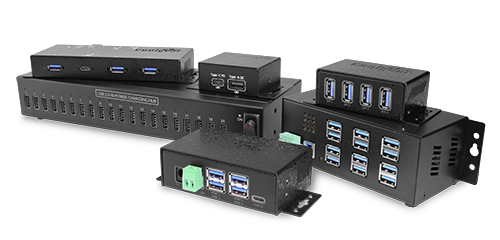
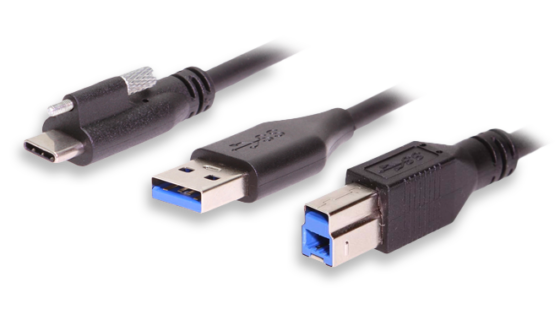
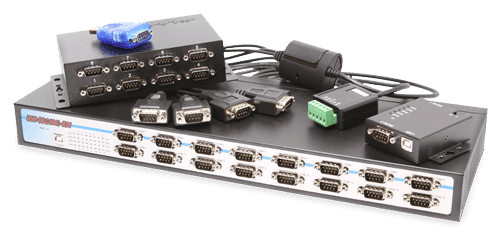
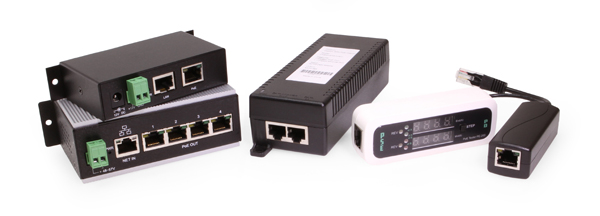
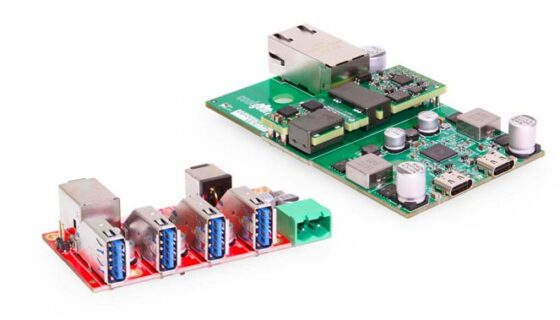

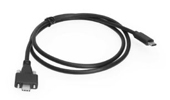

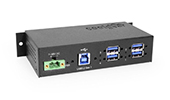
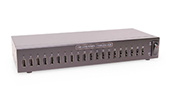
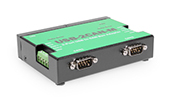
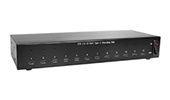
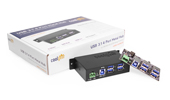
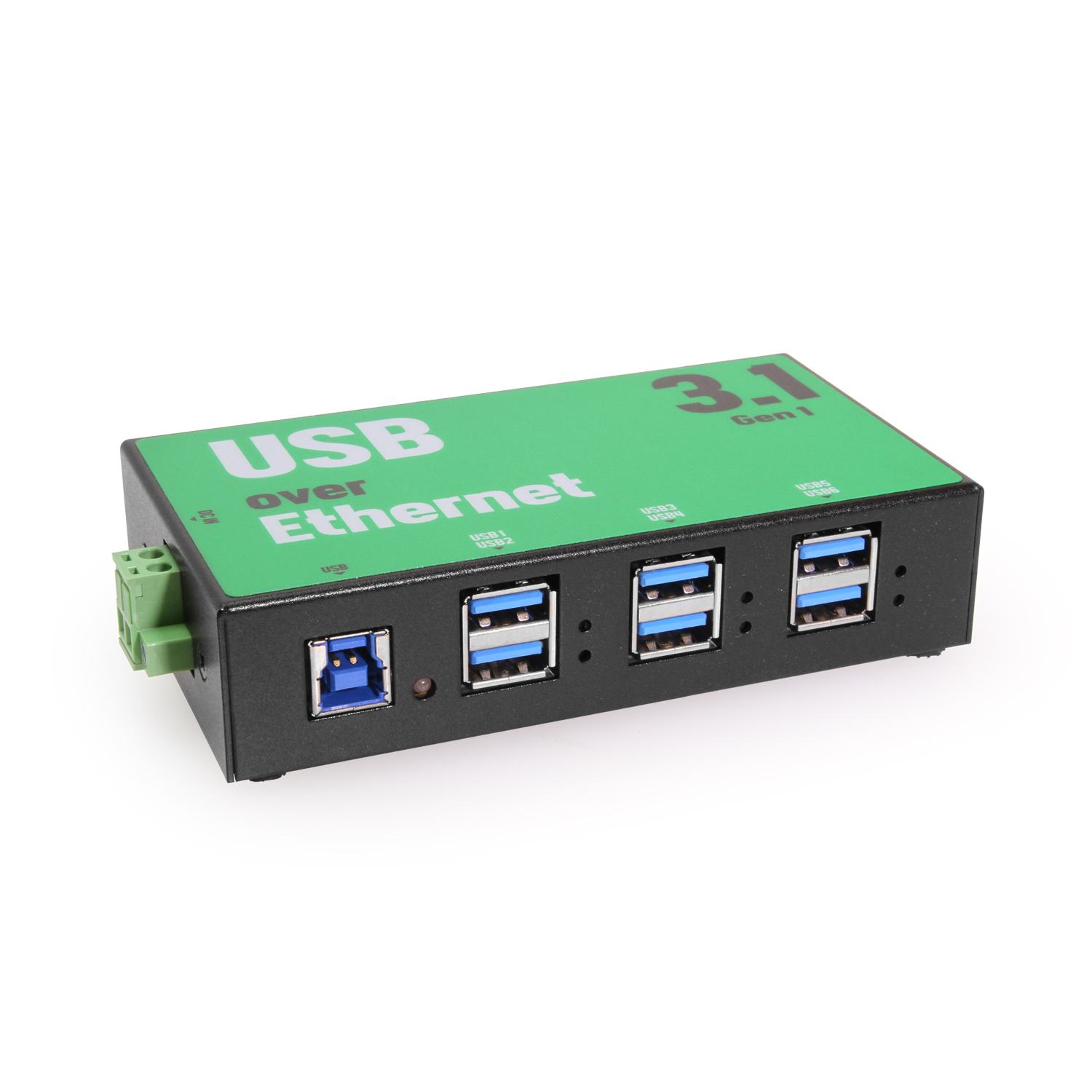
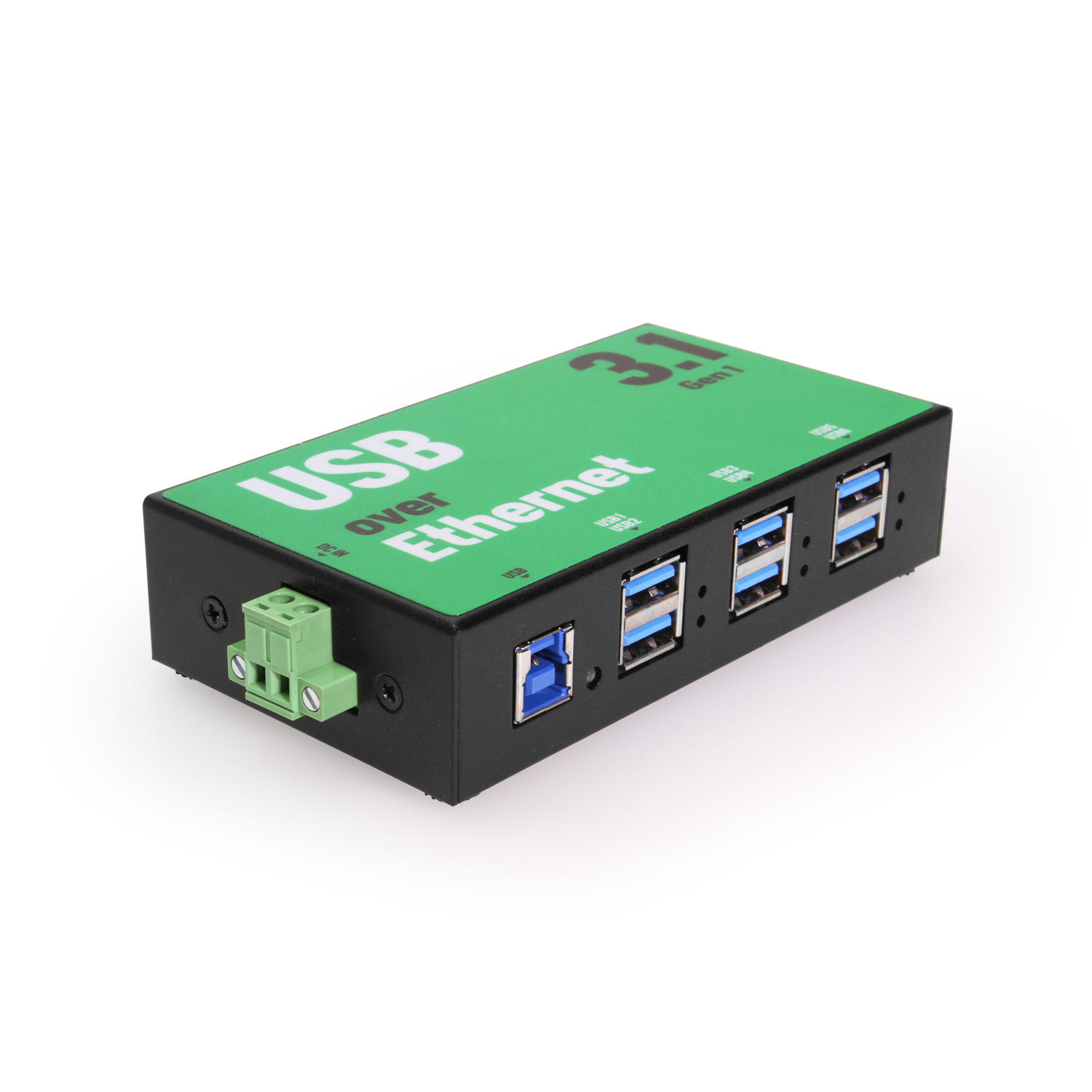
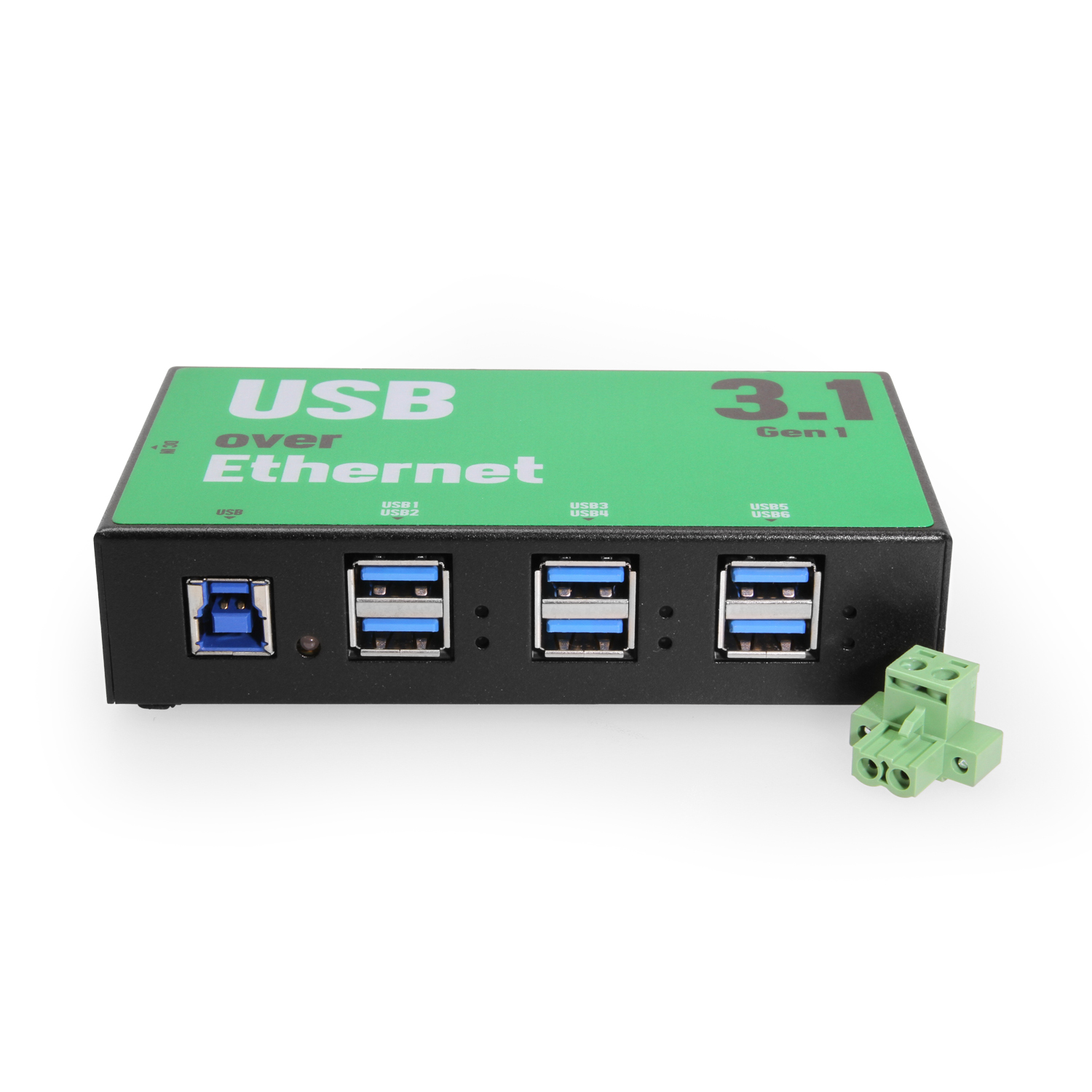
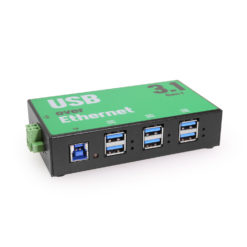
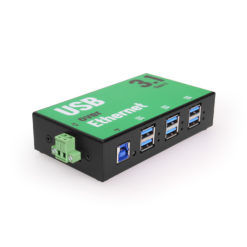
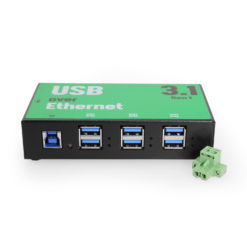
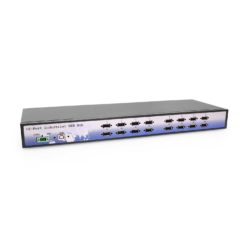
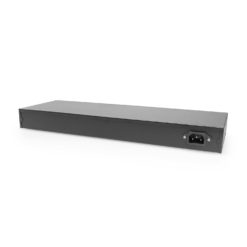
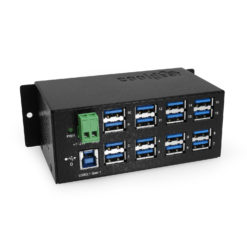
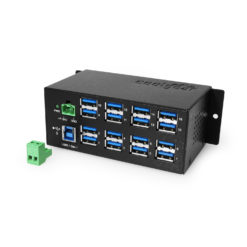
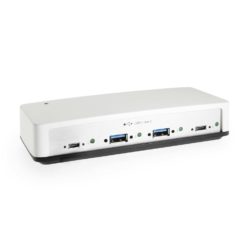
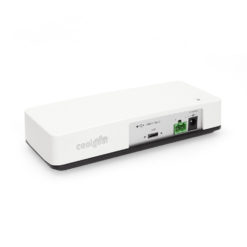
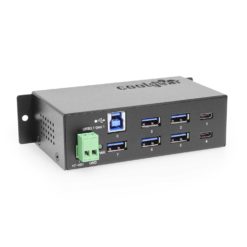
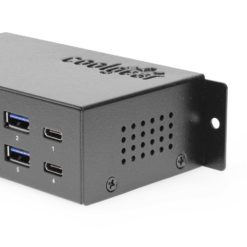
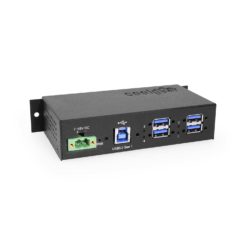
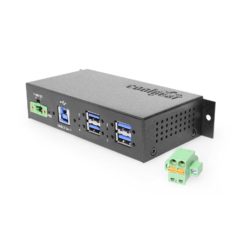
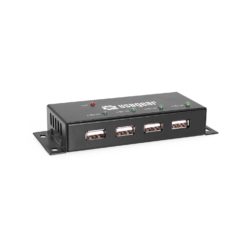
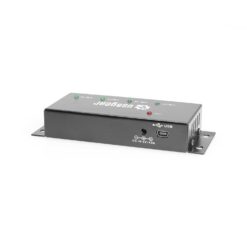
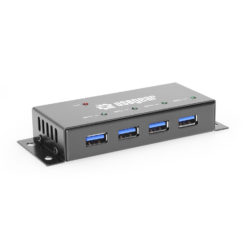
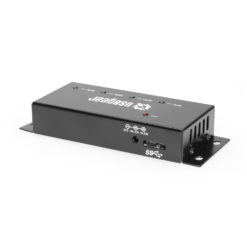
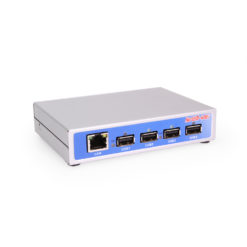
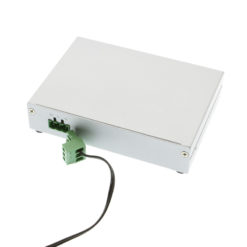
Reviews
There are no reviews yet.